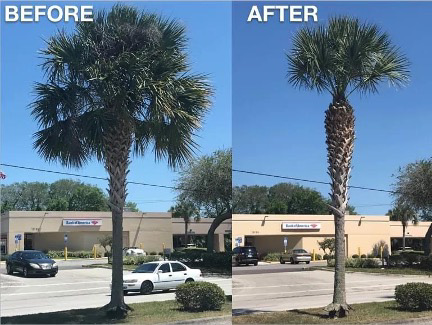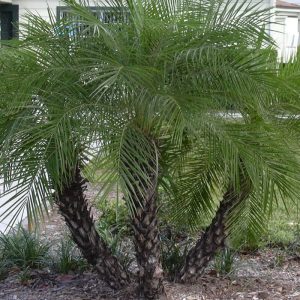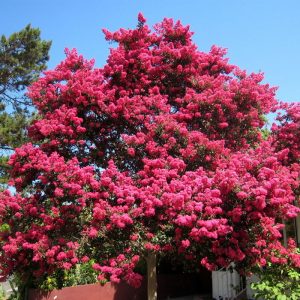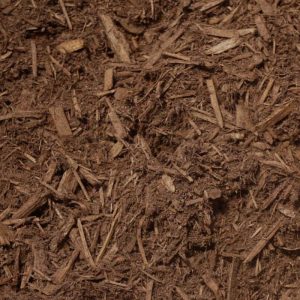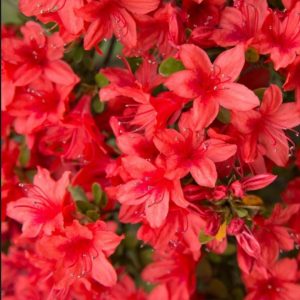Palms
Palms are tropical of nature and LOVE the warm weather. Rooting and establishment is pretty fast during the growing season. We are often asked about palm roots damaging foundations or driveways. Palm roots differ greatly from tree roots and will not damage foundations, driveways or patios.
Palms come in a variety of sizes and shapes. Some grow tall with a trunk like Queens, Sabals, Windmills and Sylvester, while others have wider heads like Pindo Palms. European Fan Palms are slow growing and idea for smaller locations. Chinese Fan Palms are single or multi trunk with large tropical fronds that will require some space to thrive. Bismark Palms with their beautiful silver color also will need room to grow! Finally, Robellinis– a perennial favorite of people- need a warmer location to thrive.
Always remember to do your homework and ask a lot of questions before you buy a palm. Don’t assume when you see a small Pygmy Palm (Robellini) that it will stay small because it is called a Pygmy. Also, don’t assume because you see a Palm for sale somewhere, that it is for our zone. We are zone 9 and palms like Foxtails, Christmas Palms, Royal Palms and Coconut Palms do not do well in our zone as they are all south Florida and beyond palm trees.
Stop by the Garden Center to find the Palm that will suit your needs!
Trees
Now that the summer heat is starting to build, we often think of shade!! Shade trees can reduce your air conditioning costs in the summer considerably. Plant deciduous trees on the south or west side of your house to provide summer shade to the hottest part of the day and in the winter the sun’s rays will warm your house as the foliage will have fallen. Evergreen trees that are planted on the north or east side will shade your house in the summer and keep the cooler north winds off your house in the winter. Some popular larger growing trees to plant include Oaks, Maples, Elms and Magnolias. For medium sized trees consider Crape Myrtles, Bottlebrushes, Holly Trees, Cherry Laurel, Loquat & Little Gem Magnolias. There are other varieties available if you stop by the Garden Center.
Always look up before you plant a tree to determine if overhead wiring will be a problem and do not plant large oaks, elms, maples or magnolias too close to either your house or driveway.
Crape Myrtles are starting to flush out beautifully now and it won’t be long before we are treated to the gorgeous flower show of the summer. Larger growing Crape Myrtles include the Lavender Muskokee or Natchez White. Medium sized Crape Myrtles would be Tuscarora (watermelon pink), Dynamite (red) or Red Rocket and Ebony-also with red flowers and dark maroon foliage! Again, always consider your planting spot carefully! Cropping off Crape Myrtles (Crape Murder!) is not something that should be done! It not only disfigures a beautiful tree but will shorten the life of the trees. In addition, the resulting flowers of a tree that has been chopped back severely are larger but far less of them! Crape Myrtles can and should be trimmed to shape, remove crossing branches and suckers but NEVER severely pruned!
Water & Mulch
Mulch flowerbeds to aid in water retention for warmer weather but keep the mulch away from the stem of the plants to prevent stem rot. Two inches of mulch is a recommended depth.
If there is no significant rain, water twice a week putting down a maximum of ½ inch per time. Mature landscapes require no more than an inch of water per week. Occasionally Mother Nature provides that! However, if you have large trees or palms that were planted in the last year, supplement the water they receive with your hose if no summer rains assist.
Pruning
Most azaleas have finished blooming now as well as camellias. If you haven’t already done so, fertilize your azaleas and camellias and you can trim them back now. Both these plants should only be trimmed until about mid-July as they will be starting to set their buds by then for the following season.
“How do I create a dense plant?”
We are asked this question frequently and as counterintuitive as it may seem- you need to trim the plant! Even if you are trying to get it to grow larger! Plant stems will continue to grow outward and never get fuller if you don’t trim them lightly to create a “flush”. This means one stem will become two or three. This is necessary to do all over the plant to create density. Unfortunately, despite common belief- trimming the top of the plant will do nothing for the bottom. Lightly trimming a plant periodically as it is growing will create the density you are looking for.
Check your trees prior to hurricane season. Look for weak limbs or problems that could become hazards in a storm. Hire a Certified Arborist to make the necessary improvements.
Also, with the approach of hurricane season many people feel the need to “hurricane cut” their palm trees. Please say NO to this as our native cabbage palm (sabal palmetto) is much better off with its fronds left in place. Aggressive pruning only benefits the tree cutters who want to do this.
